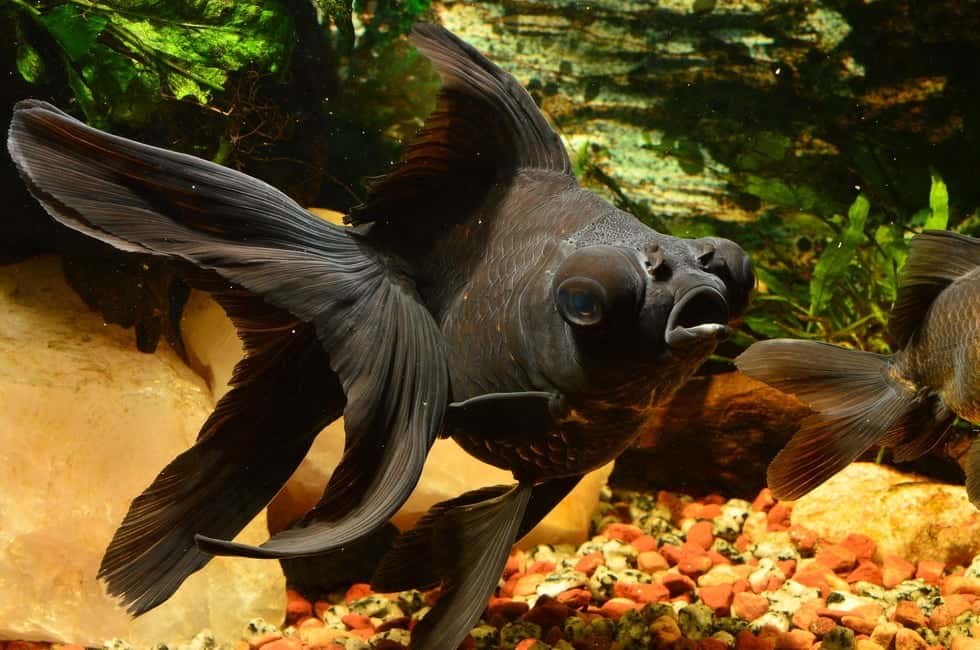

Goldfish have two sets of paired fins and three sets of single fins. ( Read more about the history of goldfish here.)

Goldfish first arrived in Europe in the 1600s and the United States in the 1800s, becoming what is likely the first foreign fish species introduced to North America. But mutations and breeding over the years created goldfish' signature orange, red, and yellow pigments found in the over a hundred varieties of the fish today. Prussian carp, from which goldfish were domesticated, are traditionally a dull, gray-green hue. There’s a common misconception that koi are large goldfish, but they are distinct species. They even share a name with a cracker, fondly known as the “snack that smiles back.”ĭon’t confuse goldfish with its oversized cousin koi, another type of domesticated carp. The fish are now ubiquitous in bowls throughout homes, classrooms, and doctor’s offices. They were seen as a symbol of luck and fortune, and they could only be owned by members of the Song Dynasty. A type of carp, goldfish were domesticated nearly 2,000 years ago for use as ornamental fish in ponds and tanks. In goldfish, stunting (lack of growth) is defined as a means of biologically preventing the development of other goldfish in the environment, and it unintentionally getting stunted via a pheromone released to the water column or any other substance.Thank the Chinese for today’s beloved aquarium mainstay, the goldfish. Since goldfish are cold-water fish, they thrive more in temperatures ranging from 65 to 80 degrees Fahrenheit. While in very high cold water temperatures (such as winter), they hibernate partially and grow more slowly. This is most likely because the conditions enhance the growth of more beneficial bacteria and the presence of more insects for goldfish to feed on. In a warmer environment, goldfish grow faster. It is safe to conclude that goldfish thrive even in a water environment that is not perfectly good. And since goldfish are often hungry, the algae is an excellent way to promote their nutrition and encourage fast growth. Algae give goldfish something to nibble on whenever they feel like it. Strangely, goldfish enjoy the presence of some algae in their aquatic environment. It’s best to supply at least one gallon of water per fully grown fish because it gives the fish the opportunity to explore their niche.įurthermore, plan the aquarium space regarding the enormous size it can become and not how big it was at the time of purchase. However, if they are placed in a small bowl, they would still grow, but much more slowly. The large size of goldfish is why they require sufficient water to spread out and have enough room to swim. To reiterate, goldfish are omnivorous, which describes their ability to eat bugs and vegetable matter, as well as smaller fish like guppies. They should have a high proportion of protein and alkaline available in their food instead of tropical fish food, which is not marked out for consumption by goldfish. Goldfish require feeding many times because they digest their food in their intestines due to the absence of stomachs. How to Ensure a Goldfish Grows to its Maximum Size Goldfish require food, space, and a suitable environment to grow as big as possible. For example, a fish that lives in an outdoor pond would grow more during summer and spring when the water is warmer, while it would grow less during the winter period when the temperature reduces. Also, depending on the environment, along with some other factors, goldfish don’t grow in spurts. Goldies keep growing all through their lives, unlike many other common pets.

Per year, goldfish grow about one inch, with their growth rate most rapid during their first few months of living. Growth Rate of Goldfish Goldfish size increases with a growth rate of about 1inch per year. Growth proceeds quickly once they start swimming, with a notable increase during the first few weeks of their lives. Instead, they hide in safe places such as vegetation until their mouths develop. Shockingly, goldfish can not eat immediately after hatching. Also, a single-tail goldfish can attain a length between 10 and 12 inches long. Talking about length, a type of goldfish known as fancy goldies, with their distinctive egg-shaped bodies, grow to about eight inches in length. The 8 Best Children’s Books About Sharks Available Today


 0 kommentar(er)
0 kommentar(er)
